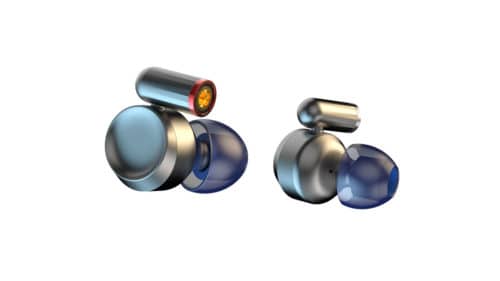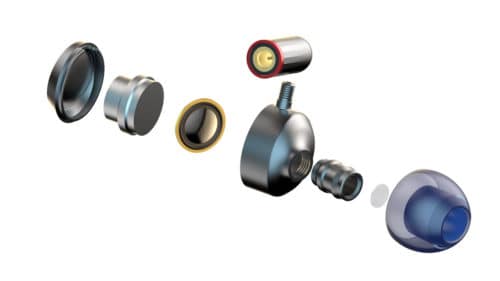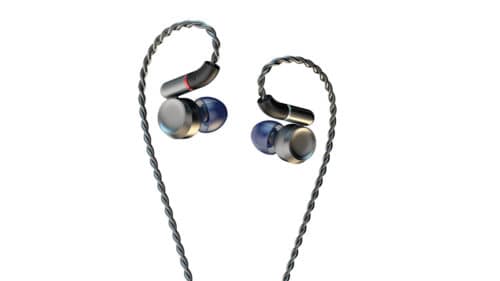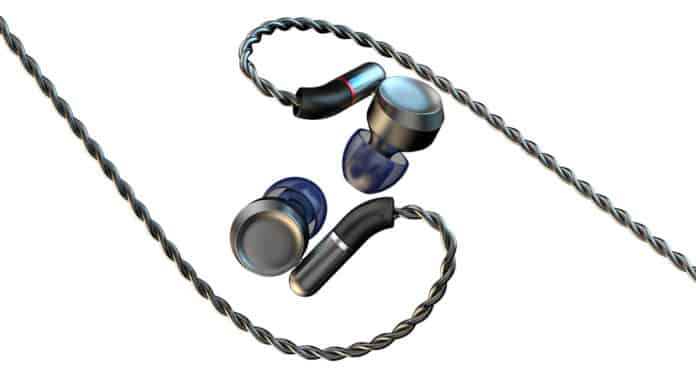This year’s New York CanJam (2020) will be a big one for Dunu. The company is showcasing one of the world’s first IEMs with pure Beryllium drivers. (Final Audio is another beryllium IEM driver pioneer, having recently released and much heralded, A8000). Dunu’s new flagship, the LUNA has been released on the 50th Anniversary of the first Moon landing. Why? Well, just like the engineers at NASA who worked tirelessly to send astronauts to the moon, Dunu believes it has achieved an engineering breakthrough with its most advanced IEM to date. And in addition to other aspects of the design, since beryllium has been so often used for aerospace applications, Dunu thought that the name, “Luna” couldn’t be any more fitting.
We, at MajorHiFi have yet had the opportunity to test out the Luna. But Dunu has told us a little bit about the design of this model so that we know what to expect. So, what makes the Luna so special? Let’s get into some of Luna’s design features:
Shell / Housing
Based on the shell design alone, the moon metaphors could not be any more apparent. Dunu says that “LUNA’s circular, concave faceplate serves as a physical representation for the changing albedo of the moon across each moon phase, while the asymmetric lip delineates waxing and waning crescentic shapes.” Trippy. But in terms of function, the shape of these shells allow Luna to be inserted and removed comfortably.
With respect to housing material, Dunu has employed grade 5 titanium alloy. Used in aerospace applications and in other industries where strong titanium is integral to design, this alloy has been custom-modified by Dunu to minimize the metal’s ringing properties. In doing so, Dunu claims that it was able to bring out the natural, “colorless” timbre of its beryllium driver.

Driver: So, what’s the deal with beryllium?
Historically, beryllium has been used in aerospace technology as well as in medical fields. But sound engineers have also concluded that beryllium is the most optimal material to use in speakers. Here are a few reasons why beryllium is preferable to aluminium or titanium:
More Speed
Beryllium delivers sound 2.5 times faster than aluminium or titanium. Over 12,000 meters per second.
More Strength
Since beryllium is such a strong material, less mass is required to achieve equivalent strength to other metals. And minimizing mass results in better transient response.
Lower Density To Mass Ratio
In short, a low density to mass ratio improves high frequency extension.
More Stiffness
The stiffness of beryllium means that there is minimal breakup and subsequently less audible resonance.
Low Poisson’s Ratio
To all my French readers, Poisson’s Ratio isn’t just a ratio of salmon to tuna. Wikipedia will tell you that “Poisson’s ratio is a measure of the Poisson effect, the phenomenon in which a material tends to expand in directions perpendicular to the direction of compression.” What does this mean to little brains like mine? Since the Poisson’s Ratio of beryllium is unusually low, the direction of applied force of sound waves is better preserved. And according to Dunu, “the very low Poisson’s ratio of beryllium potentiates its ability to maintain pistonic motion of the driver, even at the edges of a diaphragm, and in turn preserves the imaging properties of the music being reproduced.”
High Debye Temperature
The Debeye temperature is the temperature of a crystal’s highest normal mode of vibration. And Dunu claims that “the very high Debye temperature of beryllium also means the lattice structure of the beryllium metal is retained even at very high frequencies, translating to remarkable treble evenness.”

So, that’s the advantage of beryllium speakers in a nutshell. And the acoustic grade rolled foil beryllium 10mm driver is sourced from the Meterion Corporation, which is one of the world’s biggest extractors and processors of beryllium metals. Their TruExtent speaker domes are used in many high-end hifi speakers systems. And to make a long story short, Dunu and taken all this technology and miniaturized it.
What sound signature can we expect?
The Luna was tuned to produce a reference sound signature. And Dunu promises “deep and natural imaging, even and smooth from top to bottom, and maximized for extension at both ends.” It also promises to be the most detailed, transparent and “sumptuous” sounding earbuds ever designed by Dunu.
As to MajorHiFi’s sound impressions, we’ll just have wait till CanJam NYC to get our sticky little fingers on these moon buds. So, stay tuned for our soon to come, Dunu Luna Review.

MAJORHIFI may receive commissions from retail offers.








